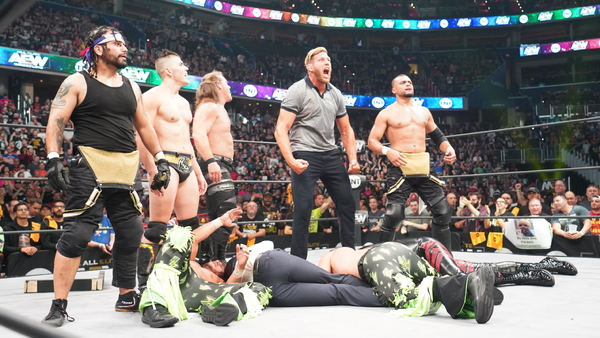How AEW Turns Trash Into Treasure

This is a performer who was never a star—and yet he came off like one. When rumours surfaced of his apparent signing, the feeling was very much LOLTNA, or AEW, Everybody: the prospect of signing Jack Swagger felt desperate, and bound to achieve the opposite of what was intended. Swagger’s name was so mundane or risible that he would drag AEW down.
The opposite of that was true: Hager, in the shredded shape of his career, legitimised (to a degree) by his mild success in MMA, landed a clubbing blow on the back of Dustin Rhodes’ neck. His Vader Bomb looked awesome. His fired-up, intense body language put him over as a beast. He looked enormous in that ring, and it wasn’t just his height: the two victims AEW selected for his blistering assault were very astute: Cody is the star, Dustin Rhodes the sentimental favourite. With one stroke, AEW built him as a top heel worthy of fear and loathing.
AEW immediately introduced him into a top-level programme in a white-hot, perfectly-booked angle. The way the moving parts came together—and the way in which it was timed—was both logical and exciting. The bursts devastation, hope, and devastation left the fans reeling. Dustin Rhodes—a performer, incidentally, WWE felt wasn’t worth promoting as a veteran presence—came off brave and honourable, not foolish. Hager looked like a killer. Cody, the ideal performer to get this over as both a shock and transgression, looked all but dead.
The secret behind AEW’s ability to turn trash into treasure is audacity fused with a long-overdue old-school mentality of promotion and storytelling.
CONT'D...(3 of 5)